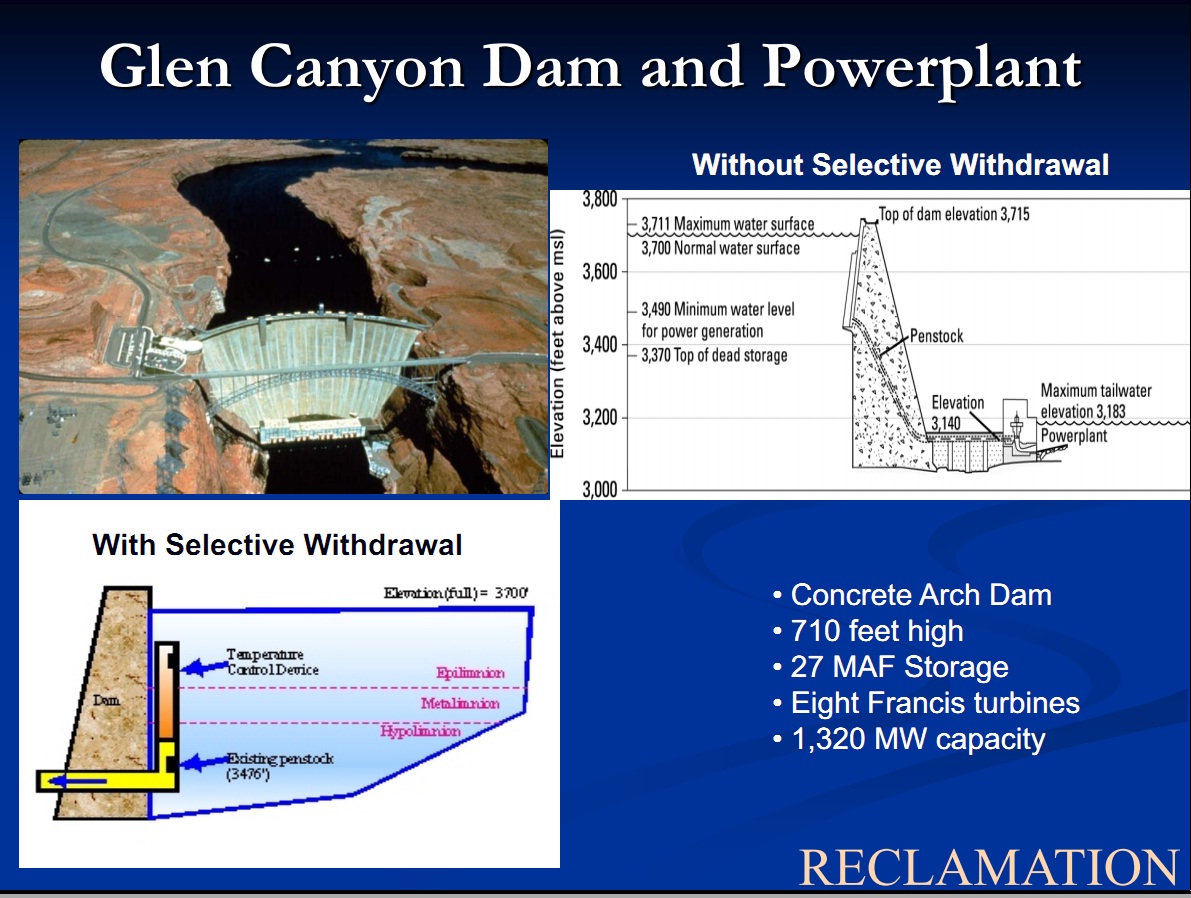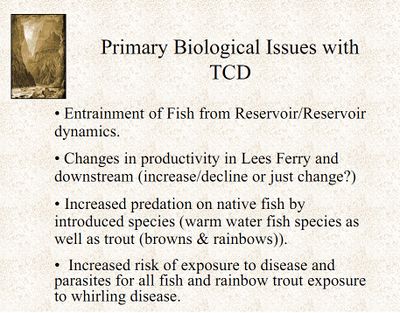Difference between revisions of "TCD Learning Page"
Cellsworth (Talk | contribs) |
Cellsworth (Talk | contribs) |
||
| Line 42: | Line 42: | ||
{|width="100%" cellpadding="2" cellspacing="5" style="vertical-align:top; background:#f5faff;" | {|width="100%" cellpadding="2" cellspacing="5" style="vertical-align:top; background:#f5faff;" | ||
! <h2 style="margin:0; background:#cedff2; font-size:120%; font-weight:bold; border:1px solid #a3bfb1; text-align:left; color:#000; padding:0.2em 0.4em;">Updates</h2> | ! <h2 style="margin:0; background:#cedff2; font-size:120%; font-weight:bold; border:1px solid #a3bfb1; text-align:left; color:#000; padding:0.2em 0.4em;">Updates</h2> | ||
| + | |- | ||
| + | |style="color:#000;"| | ||
| + | |||
| + | *Record Colorado River flow reductions averaged 19.3% per year during 2000-2014. One-third or more of the decline was likely due to warming. | ||
| + | *Unabated greenhouse gas emissions will lead to continued substantial warming, translating to twenty-first century flow reductions of 35% or more. | ||
| + | *More precipitation can reduce the flow loss, but lack of increase to date and large megadrought threat, reinforce risk of large flow loss. | ||
| + | |||
| + | Why less water? 2000-14 Temperatures are 1.6°F above 1906-99 Average | ||
| + | *Longer growing season | ||
| + | *More warmth on any given day | ||
| + | *At some point, possibly more plants and growth upslope | ||
| + | *More evaporation from soils | ||
| + | *More opportunity for sublimation | ||
| + | *More atmospheric demand | ||
| + | |||
| + | Since the late 1980s increases in temperature have caused a substantial reduction in runoff efficiency. Over the last 3 decades temperature has reduced the flow by 7% [https://www.usbr.gov/uc/rm/amp/twg/mtgs/18apr23/Attach_13.pdf] | ||
| + | |||
| + | |- | ||
| + | ! <h2 style="margin:0; background:#cedff2; font-size:120%; font-weight:bold; border:1px solid #a3b0bf; text-align:left; color:#000; padding:0.2em 0.4em;"> Need for a warm-water or a cold-water TCD? </h2> | ||
| + | |- | ||
| + | |style="color:#000;"| | ||
| + | |||
| + | ===Warm-water TCD=== | ||
| + | ===Cold-water TCD=== | ||
| + | |||
| + | |- | ||
| + | ! <h2 style="margin:0; background:#cedff2; font-size:120%; font-weight:bold; border:1px solid #a3b0bf; text-align:left; color:#000; padding:0.2em 0.4em;"> 1999 TCD Effort </h2> | ||
|- | |- | ||
|style="color:#000;"| | |style="color:#000;"| | ||
| Line 67: | Line 94: | ||
*[http://www.usbr.gov/uc/rm/amp/tcd// Reclamation's TCD Page] | *[http://www.usbr.gov/uc/rm/amp/tcd// Reclamation's TCD Page] | ||
| − | *[http://gcdamp.com/index.php?title=TEMPERATURE Temperature] | + | *[http://gcdamp.com/index.php?title=TEMPERATURE Temperature Page] |
| + | *[http://gcdamp.com/index.php?title=Hydrology Hydrology Page] | ||
|- | |- | ||
| Line 74: | Line 102: | ||
|style="color:#000;"| | |style="color:#000;"| | ||
| + | *[https://www.usbr.gov/uc/rm/amp/twg/mtgs/18apr23/Attach_13.pdf The 21st Century Colorado River Hot Drought and Implications for the Future PPT] | ||
*[http://www.usbr.gov/uc/rm/amp/amwg/mtgs/10aug24/Attach_12a.pdf| 100824_AMWG Meeting- Attachment 12.a] | *[http://www.usbr.gov/uc/rm/amp/amwg/mtgs/10aug24/Attach_12a.pdf| 100824_AMWG Meeting- Attachment 12.a] | ||
*[http://www.usbr.gov/uc/rm/amp/amwg/mtgs/01apr12/Attach_08a.pdf TCD PowerPoint Presentation_April 2001 AMWG] | *[http://www.usbr.gov/uc/rm/amp/amwg/mtgs/01apr12/Attach_08a.pdf TCD PowerPoint Presentation_April 2001 AMWG] | ||
Revision as of 15:32, 21 August 2018
|
|
Temperature Control Device - TCDBefore Glen Canyon Dam was constructed, the natural flow cycle of the Colorado River included a seasonal warming trend in the late summer as the water temperature would increase from the near freezing winter temperature to approximately 85 degrees. Once the dam was constructed, the temperature of the water released downstream became relatively steady at between 45-50 degrees as water was drawn year round from the deep, fixed level penstock intakes (used for power production). Near the dam, these cold releases are tolerated by the trout fishery, but as this water moves downstream, it only warms to about 60 degrees which is not warm enough to allow endangered, native, warm water fish, such as the humpback chub, to reproduce in the mainstem of the Colorado River. The U.S. Fish and Wildlife Service (FWS) issued a biological opinion in 1994, that recommended that temperature control modifications to the existing intake structures at the dam, be investigated by the Bureau of Reclamation (Reclamation). Temperature control modifications would allow for water to be drawn from different depths of the reservoir. Instead of only drawing water from the existing intake openings which are fairly deep and cold, the temperature control modifications would allow for water to be drawn from closer to the reservoir surface, which is much warmer. The goal would be to determine the right temperature combination of the cold and warmer water withdrawals to benefit the native endangered fish, while avoiding the possibility of encouraging competitors (non-native, warm-water fish) into the system. [1] |
| |
|
|
|---|
|
|

